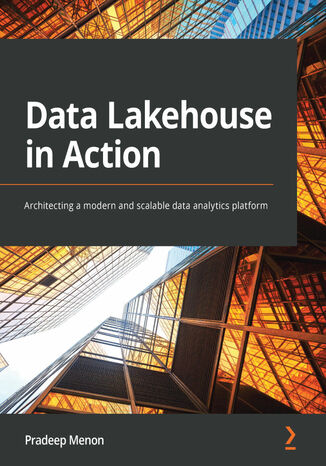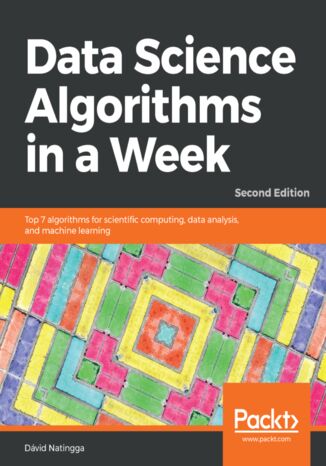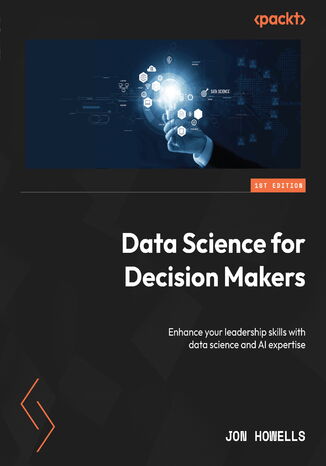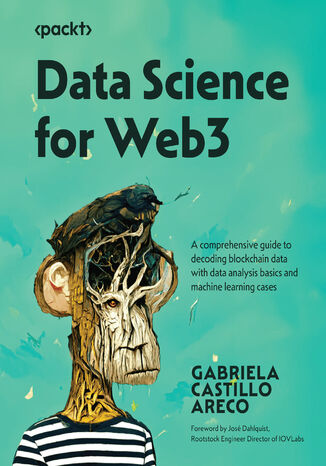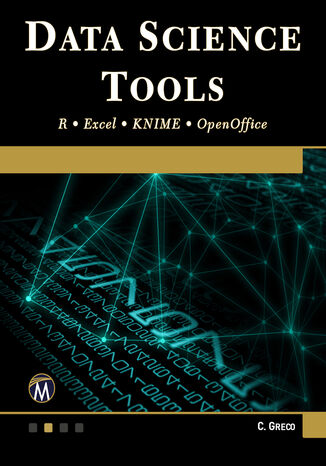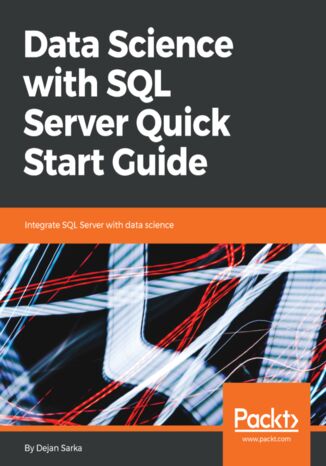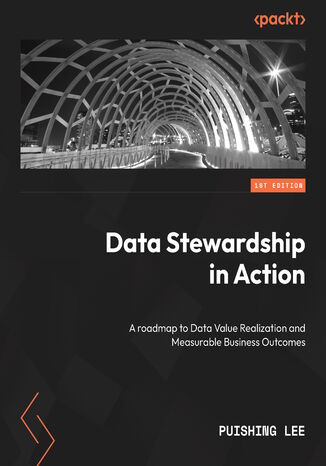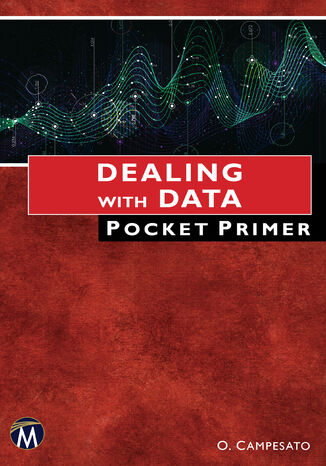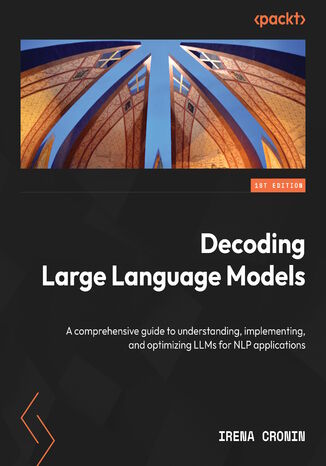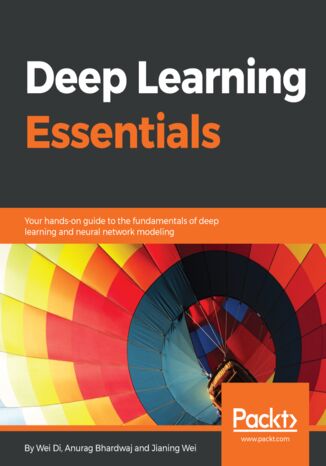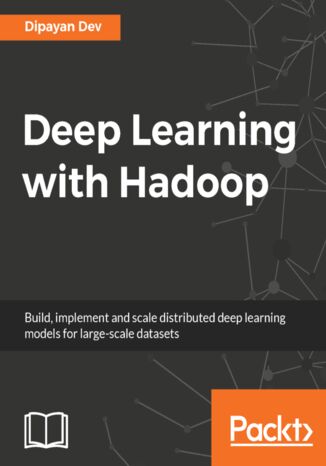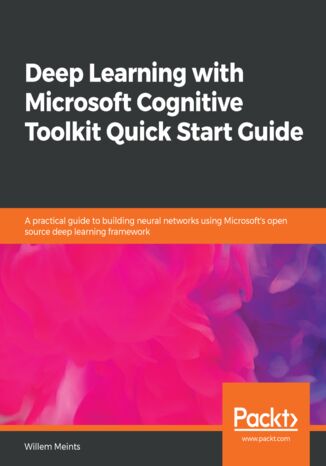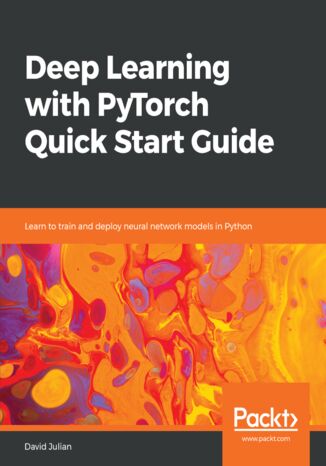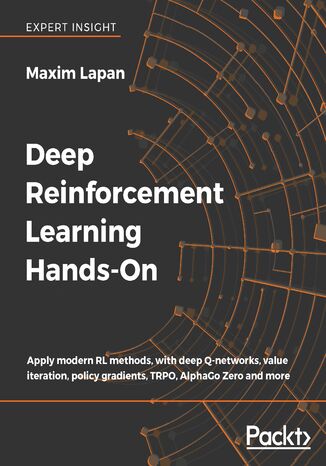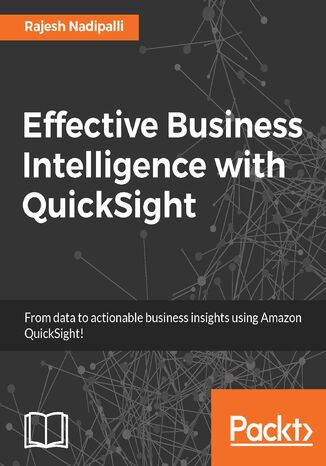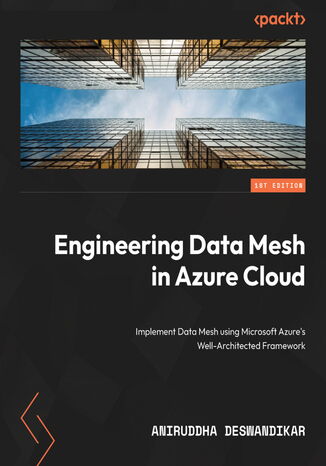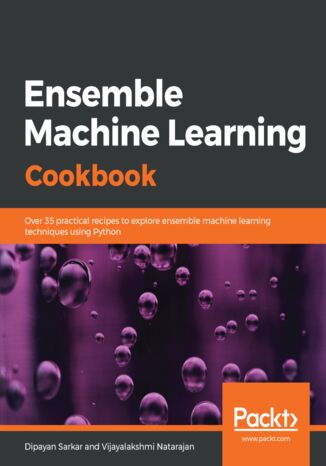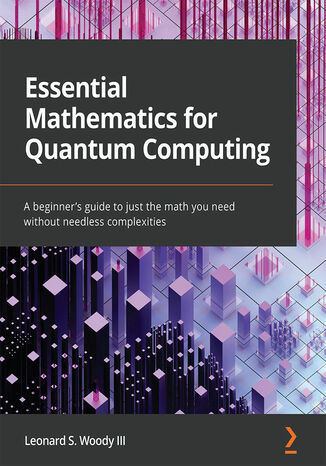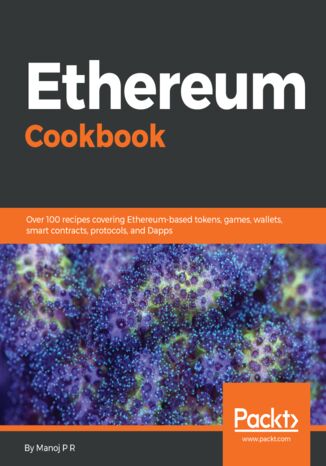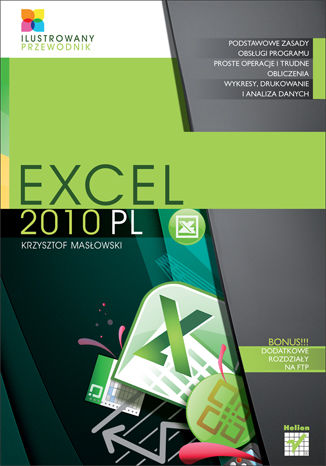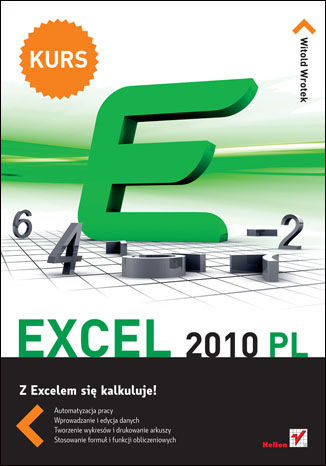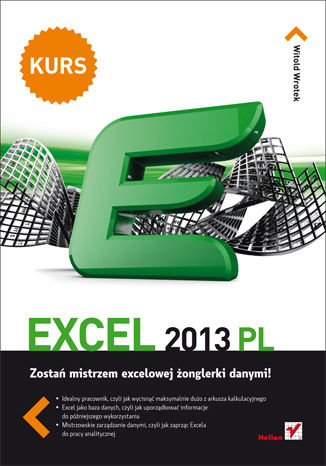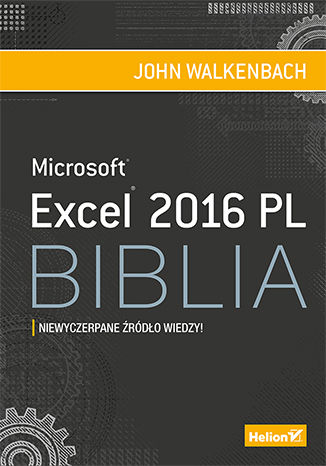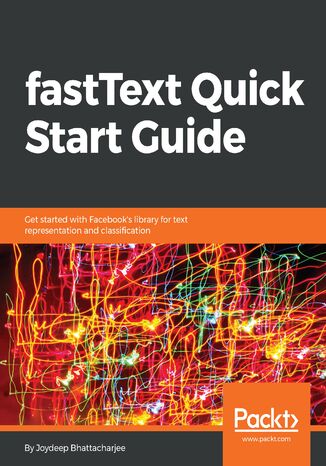Categories
Ebooks
-
Business and economy
- Bitcoin
- Businesswoman
- Coaching
- Controlling
- E-business
- Economy
- Finances
- Stocks and investments
- Personal competence
- Computer in the office
- Communication and negotiation
- Small company
- Marketing
- Motivation
- Multimedia trainings
- Real estate
- Persuasion and NLP
- Taxes
- Social policy
- Guides
- Presentations
- Leadership
- Public Relation
- Reports, analyses
- Secret
- Social Media
- Sales
- Start-up
- Your career
- Management
- Project management
- Human Resources
-
For children
-
For youth
-
Education
-
Encyclopedias, dictionaries
-
E-press
- Architektura i wnętrza
- Health and Safety
- Biznes i Ekonomia
- Home and garden
- E-business
- Ekonomia i finanse
- Esoterecism
- Finances
- Personal finance
- Business
- Photography
- Computer science
- HR & Payroll
- For women
- Computers, Excel
- Accounts
- Culture and literature
- Scientific and academic
- Environmental protection
- Opinion-forming
- Education
- Taxes
- Travelling
- Psychology
- Religion
- Agriculture
- Book and press market
- Transport and Spedition
- Healthand beauty
-
History
-
Computer science
- Office applications
- Data bases
- Bioinformatics
- IT business
- CAD/CAM
- Digital Lifestyle
- DTP
- Electronics
- Digital photography
- Computer graphics
- Games
- Hacking
- Hardware
- IT w ekonomii
- Scientific software package
- School textbooks
- Computer basics
- Programming
- Mobile programming
- Internet servers
- Computer networks
- Start-up
- Operational systems
- Artificial intelligence
- Technology for children
- Webmastering
-
Other
-
Foreign languages
-
Culture and art
-
School reading books
-
Literature
- Antology
- Ballade
- Biographies and autobiographies
- For adults
- Dramas
- Diaries, memoirs, letters
- Epic, epopee
- Essay
- Fantasy and science fiction
- Feuilletons
- Work of fiction
- Humour and satire
- Other
- Classical
- Crime fiction
- Non-fiction
- Fiction
- Mity i legendy
- Nobelists
- Novellas
- Moral
- Okultyzm i magia
- Short stories
- Memoirs
- Travelling
- Narrative poetry
- Poetry
- Politics
- Popular science
- Novel
- Historical novel
- Prose
- Adventure
- Journalism, publicism
- Reportage novels
- Romans i literatura obyczajowa
- Sensational
- Thriller, Horror
- Interviews and memoirs
-
Natural sciences
-
Social sciences
-
School textbooks
-
Popular science and academic
- Archeology
- Bibliotekoznawstwo
- Cinema studies
- Philology
- Polish philology
- Philosophy
- Finanse i bankowość
- Geography
- Economy
- Trade. World economy
- History and archeology
- History of art and architecture
- Cultural studies
- Linguistics
- Literary studies
- Logistics
- Maths
- Medicine
- Humanities
- Pedagogy
- Educational aids
- Popular science
- Other
- Psychology
- Sociology
- Theatre studies
- Theology
- Economic theories and teachings
- Transport i spedycja
- Physical education
- Zarządzanie i marketing
-
Guides
-
Game guides
-
Professional and specialist guides
-
Law
- Health and Safety
- History
- Road Code. Driving license
- Law studies
- Healthcare
- General. Compendium of knowledge
- Academic textbooks
- Other
- Construction and local law
- Civil law
- Financial law
- Economic law
- Economic and trade law
- Criminal law
- Criminal law. Criminal offenses. Criminology
- International law
- International law
- Health care law
- Educational law
- Tax law
- Labor and social security law
- Public, constitutional and administrative law
- Family and Guardianship Code
- agricultural law
- Social law, labour law
- European Union law
- Industry
- Agricultural and environmental
- Dictionaries and encyclopedia
- Public procurement
- Management
-
Tourist guides and travel
- Africa
- Albums
- Southern America
- North and Central America
- Australia, New Zealand, Oceania
- Austria
- Asia
- Balkans
- Middle East
- Bulgary
- China
- Croatia
- The Czech Republic
- Denmark
- Egipt
- Estonia
- Europe
- France
- Mountains
- Greece
- Spain
- Holand
- Iceland
- Lithuania
- Latvia
- Mapy, Plany miast, Atlasy
- Mini travel guides
- Germany
- Norway
- Active travelling
- Poland
- Portugal
- Other
- Przewodniki po hotelach i restauracjach
- Russia
- Romania
- Slovakia
- Slovenia
- Switzerland
- Sweden
- World
- Turkey
- Ukraine
- Hungary
- Great Britain
- Italy
-
Psychology
- Philosophy of life
- Kompetencje psychospołeczne
- Interpersonal communication
- Mindfulness
- General
- Persuasion and NLP
- Academic psychology
- Psychology of soul and mind
- Work psychology
- Relacje i związki
- Parenting and children psychology
- Problem solving
- Intellectual growth
- Secret
- Sexapeal
- Seduction
- Appearance and image
- Philosophy of life
-
Religion
-
Sport, fitness, diets
-
Technology and mechanics
Audiobooks
-
Business and economy
- Bitcoin
- Businesswoman
- Coaching
- Controlling
- E-business
- Economy
- Finances
- Stocks and investments
- Personal competence
- Communication and negotiation
- Small company
- Marketing
- Motivation
- Real estate
- Persuasion and NLP
- Taxes
- Social policy
- Guides
- Presentations
- Leadership
- Public Relation
- Secret
- Social Media
- Sales
- Start-up
- Your career
- Management
- Project management
- Human Resources
-
For children
-
For youth
-
Education
-
Encyclopedias, dictionaries
-
E-press
-
History
-
Computer science
-
Other
-
Foreign languages
-
Culture and art
-
School reading books
-
Literature
- Antology
- Ballade
- Biographies and autobiographies
- For adults
- Dramas
- Diaries, memoirs, letters
- Epic, epopee
- Essay
- Fantasy and science fiction
- Feuilletons
- Work of fiction
- Humour and satire
- Other
- Classical
- Crime fiction
- Non-fiction
- Fiction
- Mity i legendy
- Nobelists
- Novellas
- Moral
- Okultyzm i magia
- Short stories
- Memoirs
- Travelling
- Poetry
- Politics
- Popular science
- Novel
- Historical novel
- Prose
- Adventure
- Journalism, publicism
- Reportage novels
- Romans i literatura obyczajowa
- Sensational
- Thriller, Horror
- Interviews and memoirs
-
Natural sciences
-
Social sciences
-
Popular science and academic
-
Guides
-
Professional and specialist guides
-
Law
-
Tourist guides and travel
-
Psychology
- Philosophy of life
- Interpersonal communication
- Mindfulness
- General
- Persuasion and NLP
- Academic psychology
- Psychology of soul and mind
- Work psychology
- Relacje i związki
- Parenting and children psychology
- Problem solving
- Intellectual growth
- Secret
- Sexapeal
- Seduction
- Appearance and image
- Philosophy of life
-
Religion
-
Sport, fitness, diets
-
Technology and mechanics
Videocourses
-
Data bases
-
Big Data
-
Biznes, ekonomia i marketing
-
Cybersecurity
-
Data Science
-
DevOps
-
For children
-
Electronics
-
Graphics/Video/CAX
-
Games
-
Microsoft Office
-
Development tools
-
Programming
-
Personal growth
-
Computer networks
-
Operational systems
-
Software testing
-
Mobile devices
-
UX/UI
-
Web development
-
Management
Podcasts
- Ebooks
- IT business
- Big data
Big data
Data Lakehouse in Action. Architecting a modern and scalable data analytics platform
The Data Lakehouse architecture is a new paradigm that enables large-scale analytics. This book will guide you in developing data architecture in the right way to ensure your organization's success.The first part of the book discusses the different data architectural patterns used in the past and the need for a new architectural paradigm, as well as the drivers that have caused this change. It covers the principles that govern the target architecture, the components that form the Data Lakehouse architecture, and the rationale and need for those components. The second part deep dives into the different layers of Data Lakehouse. It covers various scenarios and components for data ingestion, storage, data processing, data serving, analytics, governance, and data security. The book's third part focuses on the practical implementation of the Data Lakehouse architecture in a cloud computing platform. It focuses on various ways to combine the Data Lakehouse pattern to realize macro-patterns, such as Data Mesh and Data Hub-Spoke, based on the organization's needs and maturity level. The frameworks introduced will be practical and organizations can readily benefit from their application.By the end of this book, you'll clearly understand how to implement the Data Lakehouse architecture pattern in a scalable, agile, and cost-effective manner.
Machine learning applications are highly automated and self-modifying, and continue to improve over time with minimal human intervention, as they learn from the trained data. To address the complex nature of various real-world data problems, specialized machine learning algorithms have been developed. Through algorithmic and statistical analysis, these models can be leveraged to gain new knowledge from existing data as well.Data Science Algorithms in a Week addresses all problems related to accurate and efficient data classification and prediction. Over the course of seven days, you will be introduced to seven algorithms, along with exercises that will help you understand different aspects of machine learning. You will see how to pre-cluster your data to optimize and classify it for large datasets. This book also guides you in predicting data based on existing trends in your dataset. This book covers algorithms such as k-nearest neighbors, Naive Bayes, decision trees, random forest, k-means, regression, and time-series analysis.By the end of this book, you will understand how to choose machine learning algorithms for clustering, classification, and regression and know which is best suited for your problem
Data Science for Decision Makers. Enhance your leadership skills with data science and AI expertise
As data science and artificial intelligence (AI) become prevalent across industries, executives without formal education in statistics and machine learning, as well as data scientists moving into leadership roles, must learn how to make informed decisions about complex models and manage data teams. This book will elevate your leadership skills by guiding you through the core concepts of data science and AI.This comprehensive guide is designed to bridge the gap between business needs and technical solutions, empowering you to make informed decisions and drive measurable value within your organization. Through practical examples and clear explanations, you'll learn how to collect and analyze structured and unstructured data, build a strong foundation in statistics and machine learning, and evaluate models confidently. By recognizing common pitfalls and valuable use cases, you'll plan data science projects effectively, from the ground up to completion. Beyond technical aspects, this book provides tools to recruit top talent, manage high-performing teams, and stay up to date with industry advancements.By the end of this book, you’ll be able to characterize the data within your organization and frame business problems as data science problems.
Gabriela Castillo Areco, José Dahlquist
Data is the new oil and Web3 is generating it at an unprecedented rate. Complete with practical examples, detailed explanations, and ideas for portfolio development, this comprehensive book serves as a step-by-step guide covering the industry best practices, tools, and resources needed to easily navigate the world of data in Web3.You’ll begin by acquiring a solid understanding of key blockchain concepts and the fundamental data science tools essential for Web3 projects. The subsequent chapters will help you explore the main data sources that can help address industry challenges, decode smart contracts, and build DeFi- and NFT-specific datasets. You’ll then tackle the complexities of feature engineering specific to blockchain data and familiarize yourself with diverse machine learning use cases that leverage Web3 data.The book includes interviews with industry leaders providing insights into their professional journeys to drive innovation in the Web 3 environment. Equipped with experience in handling crypto data, you’ll be able to demonstrate your skills in job interviews, academic pursuits, or when engaging potential clients.By the end of this book, you’ll have the essential tools to undertake end-to-end data science projects utilizing blockchain data, empowering you to help shape the next-generation internet.
Mercury Learning and Information, Christopher Greco
This book introduces popular data science tools and guides readers on how to use them effectively. It covers data analysis using Microsoft Excel, KNIME, R, and OpenOffice, applying statistical concepts such as confidence intervals, normal distribution, T-Tests, linear regression, histograms, and geographic analysis with real data from Federal Government sources.The course begins with the basics, including importing data and conducting various statistical tests. It progresses to specific methods for each tool, ensuring a comprehensive understanding of data analysis. Capstone exercises provide hands-on experience, reinforcing the concepts learned throughout the book.Understanding these tools and concepts is crucial for effective data analysis. This book takes readers from the basics to advanced statistical methods, combining theoretical insights with practical applications. Companion files with source code and data sets enhance the learning experience, making this book an essential resource for mastering data analysis with popular software applications.
Data Science with SQL Server Quick Start Guide. Integrate SQL Server with data science
SQL Server only started to fully support data science with its two most recent editions. If you are a professional from both worlds, SQL Server and data science, and interested in using SQL Server and Machine Learning (ML) Services for your projects, then this is the ideal book for you.This book is the ideal introduction to data science with Microsoft SQL Server and In-Database ML Services. It covers all stages of a data science project, from businessand data understanding,through data overview, data preparation, modeling and using algorithms, model evaluation, and deployment.You will learn to use the engines and languages that come with SQL Server, including ML Services with R and Python languages and Transact-SQL. You will also learn how to choose which algorithm to use for which task, and learn the working of each algorithm.
Data Stewardship in Action. A roadmap to data value realization and measurable business outcomes
In the competitive data-centric world, mastering data stewardship is not just a requirement—it's the key to organizational success. Unlock strategic excellence with Data Stewardship in Action, your guide to exploring the intricacies of data stewardship and its implementation for maximum efficiency.From business strategy to data strategy, and then to data stewardship, this book shows you how to strategically deploy your workforce, processes, and technology for efficient data processing. You’ll gain mastery over the fundamentals of data stewardship, from understanding the different roles and responsibilities to implementing best practices for data governance. You’ll elevate your data management skills by exploring the technologies and tools for effective data handling. As you progress through the chapters, you’ll realize that this book not only helps you develop the foundational skills to become a successful data steward but also introduces innovative approaches, including leveraging AI and GPT, for enhanced data stewardship.By the end of this book, you’ll be able to build a robust data governance framework by developing policies and procedures, establishing a dedicated data governance team, and creating a data governance roadmap that ensures your organization thrives in the dynamic landscape of data management.
Dealing With Data Pocket Primer. A Comprehensive Guide to Data Handling Techniques
Mercury Learning and Information, Oswald Campesato
This book introduces the basic concepts of managing data using various computer languages and applications. It is designed as a fast-paced introduction to key features of data management, including statistical concepts, data-related techniques, Pandas, RDBMS, SQL, NLP topics, Matplotlib, and data visualization. The companion files with source code and color figures enhance the learning experience.Understanding these concepts is crucial for anyone looking to manage data effectively. The book covers the fundamentals of probability and statistics, working with data using Pandas, managing databases with SQL and MySQL, and cleaning data using NLP techniques. It also delves into data visualization, providing practical insights and numerous code samples.The journey begins with an introduction to probability and statistics, moving on to working with data and Pandas. It then covers RDBMS and SQL, focusing on practical SQL and MySQL usage. The book concludes with NLP, data cleaning, and visualization techniques, equipping readers with a comprehensive understanding of data management.
Ever wondered how large language models (LLMs) work and how they're shaping the future of artificial intelligence? Written by a renowned author and AI, AR, and data expert, Decoding Large Language Models is a combination of deep technical insights and practical use cases that not only demystifies complex AI concepts, but also guides you through the implementation and optimization of LLMs for real-world applications.You’ll learn about the structure of LLMs, how they're developed, and how to utilize them in various ways. The chapters will help you explore strategies for improving these models and testing them to ensure effective deployment. Packed with real-life examples, this book covers ethical considerations, offering a balanced perspective on their societal impact. You’ll be able to leverage and fine-tune LLMs for optimal performance with the help of detailed explanations. You’ll also master techniques for training, deploying, and scaling models to be able to overcome complex data challenges with confidence and precision. This book will prepare you for future challenges in the ever-evolving fields of AI and NLP.By the end of this book, you’ll have gained a solid understanding of the architecture, development, applications, and ethical use of LLMs and be up to date with emerging trends, such as GPT-5.
Wei Di, Jianing Wei, Anurag Bhardwaj
Deep Learning a trending topic in the field of Artificial Intelligence today and can be considered to be an advanced form of machine learning. This book will help you take your first steps in training efficient deep learning models and applying them in various practical scenarios. You will model, train, and deploy different kinds of neural networks such as CNN, RNN, and will see some of their applications in real-world domains including computer vision, natural language processing, speech recognition, and so on. You will build practical projects such as chatbots, implement reinforcement learning to build smart games, and develop expert systems for image captioning and processing using Python library such as TensorFlow. This book also covers solutions for different problems you might come across while training models, such as noisy datasets, and small datasets.By the end of this book, you will have a firm understanding of the basics of deep learning and neural network modeling, along with their practical applications.
Deep Learning with Hadoop. Distributed Deep Learning with Large-Scale Data
This book will teach you how to deploylarge-scale dataset in deep neural networks with Hadoop foroptimal performance.Starting with understanding what deeplearning is, and what the various modelsassociated with deep neural networks are, thisbook will then show you how to set up theHadoop environment for deep learning.In this book, you will also learn how toovercome the challenges that you facewhile implementing distributed deeplearning with large-scale unstructured datasets. The book willalso show you how you can implementand parallelize the widely used deep learning models such as Deep Belief Networks,Convolutional Neural Networks, Recurrent Neural Networks, Restricted Boltzmann machines and autoencoder using the popular deep learning library Deeplearning4j.Get in-depth mathematical explanationsand visual representations to helpyou understand the design and implementationsof Recurrent Neural network and Denoising Autoencoders withDeeplearning4j. To give you a morepractical perspective, the book will alsoteach you the implementation of large-scale video processing, image processing andnatural language processing on Hadoop.By the end of this book, you willknow how to deploy various deep neural networks indistributed systems using Hadoop.
Cognitive Toolkit is a very popular and recently open sourced deep learning toolkit by Microsoft. Cognitive Toolkit is used to train fast and effective deep learning models. This book will be a quick introduction to using Cognitive Toolkit and will teach you how to train and validate different types of neural networks, such as convolutional and recurrent neural networks.This book will help you understand the basics of deep learning. You will learn how to use Microsoft Cognitive Toolkit to build deep learning models and discover what makes this framework unique so that you know when to use it. This book will be a quick, no-nonsense introduction to the library and will teach you how to train different types of neural networks, such as convolutional neural networks, recurrent neural networks, autoencoders, and more, using Cognitive Toolkit. Then we will look at two scenarios in which deep learning can be used to enhance human capabilities. The book will also demonstrate how to evaluate your models' performance to ensure it trains and runs smoothly and gives you the most accurate results. Finally, you will get a short overview of how Cognitive Toolkit fits in to a DevOps environment
PyTorch is extremely powerful and yet easy to learn. It provides advanced features, such as supporting multiprocessor, distributed, and parallel computation. This book is an excellent entry point for those wanting to explore deep learning with PyTorch to harness its power. This book will introduce you to the PyTorch deep learning library and teach you how to train deep learning models without any hassle. We will set up the deep learning environment using PyTorch, and then train and deploy different types of deep learning models, such as CNN, RNN, and autoencoders. You will learn how to optimize models by tuning hyperparameters and how to use PyTorch in multiprocessor and distributed environments. We will discuss long short-term memory network (LSTMs) and build a language model to predict text.By the end of this book, you will be familiar with PyTorch's capabilities and be able to utilize the library to train your neural networks with relative ease.
Deep Reinforcement Learning Hands-On is a comprehensive guide to the very latest DL tools and their limitations. You will evaluate methods including Cross-entropy and policy gradients, before applying them to real-world environments. Take on both the Atari set of virtual games and family favorites such as Connect4.The book provides an introduction to the basics of RL, giving you the know-how to code intelligent learning agents to take on a formidable array of practical tasks. Discover how to implement Q-learning on 'grid world' environments, teach your agent to buy and trade stocks, and find out how natural language models are driving the boom in chatbots.
Effective Business Intelligence with QuickSight. Boost your business IQ with Amazon QuickSight
Amazon QuickSight is the next-generation Business Intelligence (BI) cloud service that can help you build interactive visualizations on top of various data sources hosted on Amazon Cloud Infrastructure. QuickSight delivers responsive insights into big data and enables organizations to quickly democratize data visualizations and scale to hundreds of users at a fraction of the cost when compared to traditional BI tools.This book begins with an introduction to Amazon QuickSight, feature differentiators from traditional BI tools, and how it fits in the overall AWS big data ecosystem. With practical examples, you will find tips and techniques to load your data to AWS, prepare it, and finally visualize it using QuickSight. You will learn how to build interactive charts, reports, dashboards, and stories using QuickSight and share with others using just your browser and mobile app.The book also provides a blueprint to build a real-life big data project on top of AWS Data Lake Solution and demonstrates how to build a modern data lake on the cloud with governance, data catalog, and analysis. It reviews the current product shortcomings, features in the roadmap, and how to provide feedback to AWS.Grow your profits, improve your products, and beat your competitors.
Decentralizing data and centralizing governance are practical, scalable, and modern approaches to data analytics. However, implementing a data mesh can feel like changing the engine of a moving car. Most organizations struggle to start and get caught up in the concept of data domains, spending months trying to organize domains. This is where Engineering Data Mesh in Azure Cloud can help.The book starts by assessing your existing framework before helping you architect a practical design. As you progress, you’ll focus on the Microsoft Cloud Adoption Framework for Azure and the cloud-scale analytics framework, which will help you quickly set up a landing zone for your data mesh in the cloud.The book also resolves common challenges related to the adoption and implementation of a data mesh faced by real customers. It touches on the concepts of data contracts and helps you build practical data contracts that work for your organization. The last part of the book covers some common architecture patterns used for modern analytics frameworks such as artificial intelligence (AI).By the end of this book, you’ll be able to transform existing analytics frameworks into a streamlined data mesh using Microsoft Azure, thereby navigating challenges and implementing advanced architecture patterns for modern analytics workloads.
Dipayan Sarkar, Vijayalakshmi Natarajan
Ensemble modeling is an approach used to improve the performance of machine learning models. It combines two or more similar or dissimilar machine learning algorithms to deliver superior intellectual powers. This book will help you to implement popular machine learning algorithms to cover different paradigms of ensemble machine learning such as boosting, bagging, and stacking.The Ensemble Machine Learning Cookbook will start by getting you acquainted with the basics of ensemble techniques and exploratory data analysis. You'll then learn to implement tasks related to statistical and machine learning algorithms to understand the ensemble of multiple heterogeneous algorithms. It will also ensure that you don't miss out on key topics, such as like resampling methods. As you progress, you’ll get a better understanding of bagging, boosting, stacking, and working with the Random Forest algorithm using real-world examples. The book will highlight how these ensemble methods use multiple models to improve machine learning results, as compared to a single model. In the concluding chapters, you'll delve into advanced ensemble models using neural networks, natural language processing, and more. You’ll also be able to implement models such as fraud detection, text categorization, and sentiment analysis.By the end of this book, you'll be able to harness ensemble techniques and the working mechanisms of machine learning algorithms to build intelligent models using individual recipes.
Quantum computing is an exciting subject that offers hope to solve the world’s most complex problems at a quicker pace. It is being used quite widely in different spheres of technology, including cybersecurity, finance, and many more, but its concepts, such as superposition, are often misunderstood because engineers may not know the math to understand them. This book will teach the requisite math concepts in an intuitive way and connect them to principles in quantum computing.Starting with the most basic of concepts, 2D vectors that are just line segments in space, you'll move on to tackle matrix multiplication using an instinctive method. Linearity is the major theme throughout the book and since quantum mechanics is a linear theory, you'll see how they go hand in hand. As you advance, you'll understand intrinsically what a vector is and how to transform vectors with matrices and operators. You'll also see how complex numbers make their voices heard and understand the probability behind it all.It’s all here, in writing you can understand. This is not a stuffy math book with definitions, axioms, theorems, and so on. This book meets you where you’re at and guides you to where you need to be for quantum computing. Already know some of this stuff? No problem! The book is componentized, so you can learn just the parts you want. And with tons of exercises and their answers, you'll get all the practice you need.
Ethereum and Blockchain will change the way software is built for business transactions. Most industries have been looking to leverage these new technologies to gain efficiencies and create new business models and opportunities.The Ethereum Cookbook covers various solutions such as setting up Ethereum, writing smart contracts, and creating tokens, among others. You’ll learn about the security vulnerabilities, along with other protocols of Ethereum.Once you have understood the basics, you’ll move on to exploring various design decisions and tips to make your application scalable and secure. In addition to this, you’ll work with various Ethereum packages such as Truffle, Web3, and Ganache.By the end of this book, you’ll have comprehensively grasped the Ethereum principles and ecosystem.
Excel 2010 PL. Ilustrowany przewodnik
Pobierz dodatkowy rozdział do książki! Skalkuluj sobie awans z nowym Excelem 2010! Podstawowe zasady obsługi programu, czyli od czego zacząć przygodę z Excelem Proste operacje i trudne obliczenia, czyli do czego może przydać się ta aplikacja Wykresy, drukowanie i analiza danych, czyli jak wykorzystać ogrom możliwości Excel 2010, podobnie jak każda kolejna wersja tego niezwykle popularnego programu, oferuje swoim użytkownikom nowe, ciekawe możliwości. Zarówno tak zwany przeciętny użytkownik, jak i analityk finansowy znajdą tu praktyczne funkcje, ułatwiające im codzienną pracę. Do najbardziej nowatorskich pomysłów należy opcja Wykresy przebiegu w czasie, umożliwiająca tworzenie miniwykresów, zajmujących jedną komórkę. Aplikacja zawiera też wyspecjalizowane narzędzia do analizy danych oraz lepsze filtry, zapewnia wyższy komfort przy pracy zespołowej i współdzieleniu arkuszy, a dzięki dużej wydajności pozwala zaoszczędzić sporo czasu. "Excel 2010 PL. Ilustrowany przewodnik " to przejrzysty, intuicyjnie napisany podręcznik, gwarantujący Ci szybkie i bezproblemowe zapoznanie się z dostępnymi narzędziami oraz sposobem działania programu. Z pomocą tej książki bez trudu opanujesz nowy interfejs użytkownika i dostosujesz go do własnych potrzeb, a także poznasz sekrety i sztuczki związane z podstawowymi oraz zaawansowanymi metodami obróbki danych liczbowych. Krok po kroku nauczysz się sprawnie korzystać z Excela: dowiesz się m.in., jak stworzyć listę płac albo rozliczyć delegację, a ponadto poznasz mnóstwo innych praktycznych jego zastosowań. Każde kolejne działanie — od najprostszych po najbardziej skomplikowane — zostało tu szczegółowo opisane i zilustrowane zrzutem ekranu. Wstążka i okno programu — zmiana wyglądu i kolorystyki Skróty klawiszowe, prezentacja arkusza i skoroszytu Poruszanie się po arkuszu i między arkuszami Wprowadzanie danych do komórek i edycja tych danych Zakresy Wstawianie i usuwanie kolumn, wierszy, komórek Nazywanie skoroszytów i arkuszy oraz działania na kilku arkuszach Kopiowanie, dodawanie i usuwanie arkuszy Oglądanie i ukrywanie arkuszy oraz tryby ich wyświetlania Operatory używane w formułach i kolejność ich działania Adresy względne, mieszane, bezwzględne i trójwymiarowe Formatowanie zmieniające znaczenie, warunkowe i niestandardowe Tworzenie i przekształcanie wykresów oraz ich różne typy Podgląd, drukowanie i układ strony Elementy analizy danych — sortowanie, filtrowanie Oto bogato ilustrowany przewodnik po świecie możliwości Excela!
Z Excelem się kalkuluje! Automatyzacja pracy Wprowadzanie i edycja danych Tworzenie wykresów i drukowanie arkuszy Stosowanie formuł i funkcji obliczeniowych Umiesz liczyć - licz z Excelem! Czym jest arkusz kalkulacyjny Excela? To doskonałe narzędzie ze stajni Microsoft Office jest odpowiedzią na tony zeszytów wraz z tabelami, pomyłki popełniane przy liczeniu, kalkulatory z ograniczoną liczbą funkcji czy wykresy rysowane kredą na tablicach. Excel to prawdopodobnie najlepszy arkusz kalkulacyjny na świecie. Odnosi on sukcesy od roku 1987 i doskonale sprawdza się w przedsiębiorstwach, szkołach i na osobistych pecetach. Z jego pomocą można zautomatyzować prace administracyjne, oszacować koszty, stworzyć symulacje, wygenerować wykresy czy kontrolować budżet - firmowy i domowy. A jak Ty planujesz wykorzystać dziesiątki funkcji i możliwości tego narzędzia? Najczęstszym problemem podczas pracy z Excelem jest wydobycie tkwiącej w nim mocy obliczeniowej. Dlatego też umiejętność jego obsługi jest tak pożądana przez pracodawców i przynosi firmie wymierne korzyści. Z tym podręcznikiem zaczniesz bezbłędnie wykonywać obliczenia w arkuszach Excela, będziesz formatować komórki i gromadzić dane. Przestaniesz bać się tworzenia wykresów, używania funkcji i formuł oraz poruszania się między skoroszytami. Skorzystasz z ilustracji, obrazowych przykładów i ćwiczeń - bez konieczności wgryzania się w specjalistyczną terminologię. Obierz kurs na Excel! Tworzenie nowych i otwieranie istniejących arkuszy Korzystanie z funkcji i formuł matematycznych, finansowych, statystycznych i innych Wprowadzanie do komórek, formatowanie oraz wyszukiwanie danych Drukowanie arkuszy Tworzenie wykresów Praca z Analysis ToolPak
Zostań mistrzem excelowej żonglerki danymi! Idealny pracownik, czyli jak wycisnąć maksymalnie dużo z arkusza kalkulacyjnego Excel jako baza danych, czyli jak uporządkować informacje do późniejszego wykorzystania Mistrzowskie zarządzanie danymi, czyli jak zaprząc Excel do pracy analitycznej Excel, używany powszechnie do przeprowadzania żmudnych obliczeń lub jako podręczny zamiennik kalkulatora, we wprawnych rękach może stać się prawdziwym centrum dokumentowania i planowania działań firmy — nie tylko tych finansowych. Wyliczanie zarobków pracowników, bilansowanie inwestycji i kosztów, przeprowadzanie analizy ekonomicznej, analizy statystycznej, symulacji kredytowych czy generowanie wszelkiej maści harmonogramów i wykresów — te i wiele innych możliwości daje nam właściwe wykorzystanie potężnej mocy programu. Jeśli chcesz szybko zacząć swobodnie poruszać się wśród kolumn i wierszy, pewnie edytować dane oraz stosować formuły i funkcje odpowiednie do Twoich zamierzeń, czas sięgnąć po tę książkę. Dowiesz się z niej, jak bezpiecznie pracować z danymi i chronić je przed utratą, jak zmusić Excel, by wykonywał lwią część pracy za Ciebie, jak rozwiązywać problemy. Zrozumiesz, co daje poprawne formatowanie komórek. Odkryjesz, jak wykonywać obliczenia finansowe i nie zgubić się w gąszczu danych, a ponadto nauczysz się korzystać z niezawodnej pomocy Microsoftu. Ucz się i doceń Excel 2013 PL. Rozpoczynanie pracy i zapisywanie informacji Eliminacja niebezpieczeństwa utraty danych Jak oszczędzać czas Łatwe sposoby zaznaczania Edycja danych i sekrety formatowania komórek Drukowanie i samodzielne rozwiązywanie problemów Formuły i funkcje w praktyce Funkcje czasu i daty Skarby w sieci — Microsoft Office i pomoc techniczna Microsoftu Proste obliczenia finansowe Dodatek Analysis ToolPak Oszczędzaj czas z Excelem 2013 PL!
Podobno nikt nie zna wszystkich możliwości Excela, choć jest to najpopularniejszy arkusz kalkulacyjny na świecie. Z pewnością jest bardzo wszechstronny. Prowadzenie domowego budżetu, analizy biznesowe, opracowywanie raportów i zestawień, statystyczna analiza wyników badań naukowych czy notowań giełdy, korespondencja seryjna, a nawet wysyłanie powiadomień e-mail — to tylko kilka sposobów wykorzystania tego potężnego oprogramowania. Aby je docenić, trzeba się jednak umieć nim posłużyć, nawet jeśli to jest Excel w wersji 2016, uznanej za najłatwiejszą w obsłudze. Niniejsza książka to zaktualizowane wydanie kultowego podręcznika, przeznaczonego dla wszystkich użytkowników Excela, niezależnie od stopnia wtajemniczenia. Uwzględniono w nim zmiany wprowadzone w Excelu 2016. Przedstawiono poszczególne możliwości programu, od stosowania szablonów, przez obsługę formuł i tworzenie tabel przestawnych, aż po analizę danych i wiele innych przydatnych funkcji. Każdy, kto korzysta z Excela, powinien mieć ten cenny przewodnik zawsze w zasięgu ręki. Okaże się niezawodną i błyskawiczną pomocą! Najważniejsze zagadnienia ujęte w książce: solidne podstawy Excela, cenne zwłaszcza dla początkujących, posługiwanie się formułami i funkcjami przy wykonywaniu obliczeń, prezentacja danych na wykresach oraz wykorzystanie grafiki, analiza danych, w tym porządkowanie danych, tabele przestawne, analiza co-jeśli i dodatek Analysis ToolPak, zaawansowane funkcje Excela, w tym sprawdzanie poprawności danych i ich ochrona, programowanie w języku VBA w Excelu. Poznaj Excela i sprawdź, w czym jeszcze może Ci pomóc!
Facebook's fastText library handles text representation and classification, used for Natural Language Processing (NLP). Most organizations have to deal with enormous amounts of text data on a daily basis, and gaining efficient data insights requires powerful NLP tools such as fastText. This book is your ideal introduction to fastText. You will learn how to create fastText models from the command line, without the need for complicated code. You will explore the algorithms that fastText is built on and how to use them for word representation and text classification. Next, you will use fastText in conjunction with other popular libraries and frameworks such as Keras, TensorFlow, and PyTorch. Finally, you will deploy fastText models to mobile devices. By the end of this book, you will have all the required knowledge to use fastText in your own applications at work or in projects.

